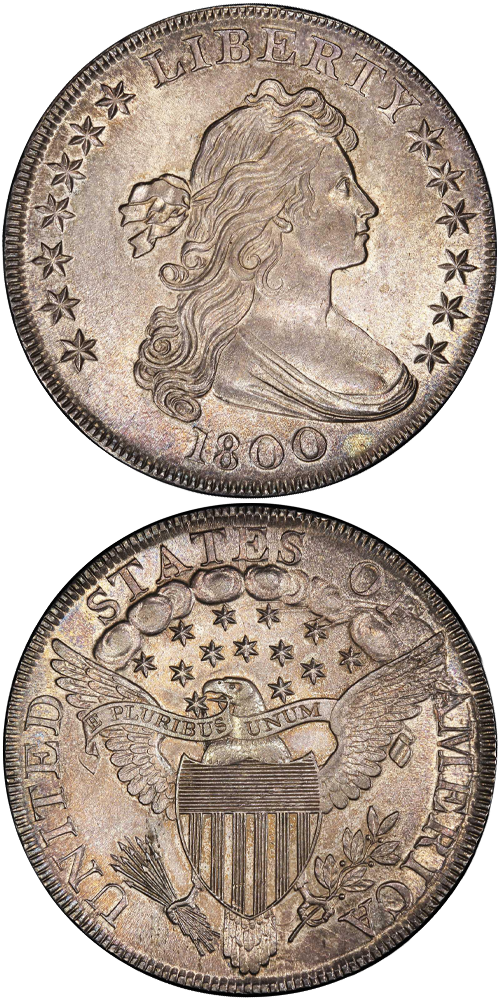1800 Draped Bust Dollar
The year 1800 was an inflection point in the history of the United States Mint and the dollar denomination. After mintages of 327,536 and 423,515 in 1798 and 1799, the number of dollars decreased in 1800 to fewer than 221,000. The annual mintage would not top 100,000 pieces again for more than 40 years. The Mint institution endured similar ups and downs. After five years of gold and silver coin production, and nearly a decade of operation, the Philadelphia Mint was threatened by the impending removal of the national capital to its new location on the banks of the Potomac. Elias Boudinot warned President John Adams, "The doubtful consequences of a removal must strike every person acquainted with the business of the mint, as it is in a great measure supported by the bullion passing through the different banks of this city." Boudinot understood that transplanting the Mint from the biggest commercial center in the nation to a new city far from the corridors of economic power would have devastating consequences. Further, the Mint's products were disappearing from circulation faster than they could be replaced, as the gyrations of the international market for gold and silver created premiums that made the export and melting of United States coins more and more profitable for corporate entrepreneurs.
Boudinot successfully lobbied Congress for a reprieve from the impending move, receiving a two-year stay of execution on March 3, 1801. Further five-year renewals passed Congress in 1803, 1808, 1813, 1818, and 1823, but it wasn't until the Act of May 19, 1828 that the Mint was allowed to "continue ... at Philadelphia until otherwise provided by law." Over that time, Congress made several serious inquiries into shutting down the Mint permanently, most seriously in 1802.
The example to the left was sold by Stack's Bowers Galleries in the D. Brent Pogue Part V Auction, where it realized $114,562.






